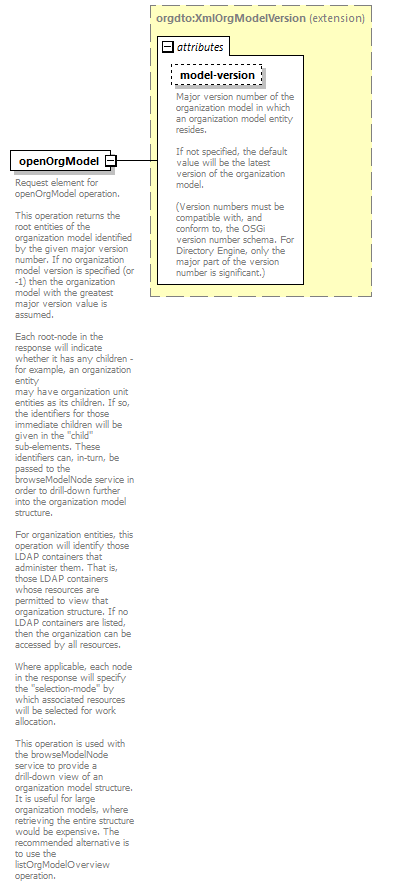| diagram |  |
||||||||||||||
| namespace | http://browse.api.de.n2.tibco.com | ||||||||||||||
| type | extension of XmlOrgModelVersion | ||||||||||||||
| properties |
|
||||||||||||||
| attributes |
|
||||||||||||||
| annotation |
|
||||||||||||||
| source | <xs:element name="openOrgModel"> <xs:annotation> <xs:documentation>Request element for openOrgModel operation. This operation returns the root entities of the organization model identified by the given major version number. If no organization model version is specified (or -1) then the organization model with the greatest major version value is assumed. Each root-node in the response will indicate whether it has any children - for example, an organization entity may have organization unit entities as its children. If so, the identifiers for those immediate children will be given in the "child" sub-elements. These identifiers can, in-turn, be passed to the browseModelNode service in order to drill-down further into the organization model structure. For organization entities, this operation will identify those LDAP containers that administer them. That is, those LDAP containers whose resources are permitted to view that organization structure. If no LDAP containers are listed, then the organization can be accessed by all resources. Where applicable, each node in the response will specify the "selection-mode" by which associated resources will be selected for work allocation. This operation is used with the browseModelNode service to provide a drill-down view of an organization model structure. It is useful for large organization models, where retrieving the entire structure would be expensive. The recommended alternative is to use the listOrgModelOverview operation.</xs:documentation> </xs:annotation> <xs:complexType> <xs:complexContent> <xs:extension base="orgdto:XmlOrgModelVersion"/> </xs:complexContent> </xs:complexType> </xs:element> |
WSDL documentation generated by XMLSpy WSDL Editor http://www.altova.com/xmlspy